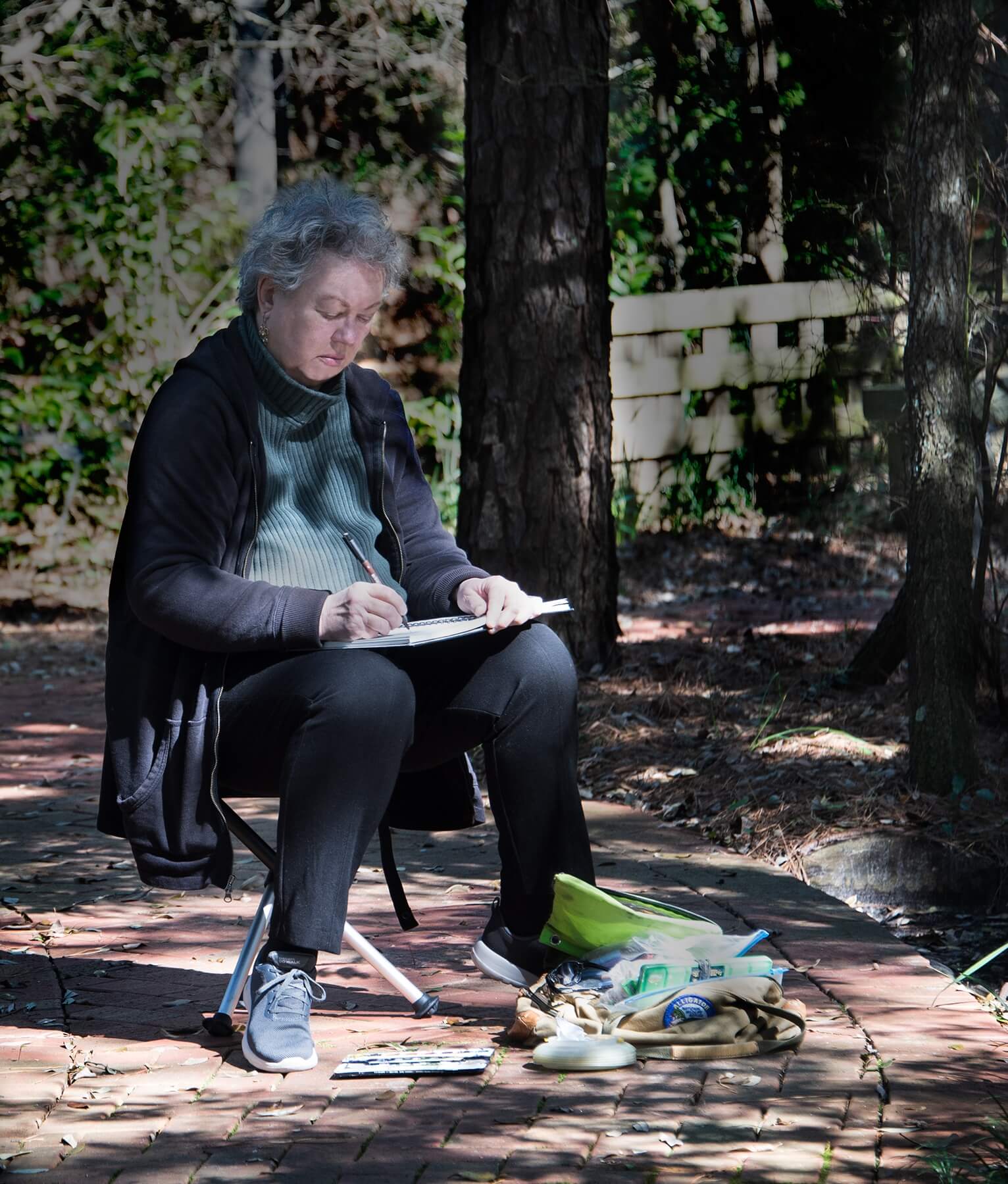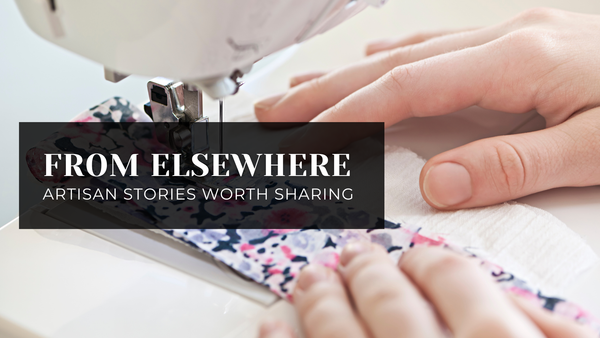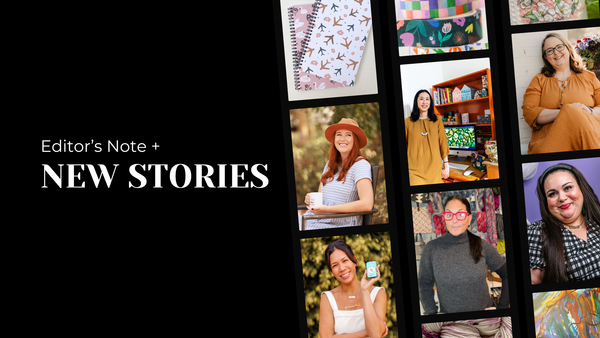EM Corsa on How Sketching Got Her Through Chemo and Being Determined to Succeed as An Artist


E.M. Corsa, a fanciful nature artist, creates original watercolor paintings on antique book pages and vintage postcards. She also paints watercolor on Yupo paper with antique ephemera. If you’re unfamiliar with the term like me, here’s how The Ephemera Society of America defines it:
“In a nutshell, to collectors ‘ephemera’ are vintage printed or written items which originally served some specific purpose and were not expected to be retained or preserved, but which are now cherished.”

E.M.’s ability to take antique book pages and postcards and make them new is pure magic. We asked the artist about her work and process. In the interview, we learned about E.M.’s determination to earn a living from her craft and how sketching helped her get through chemotherapy. Read on to learn more.
I decided many years ago to find a way to make a living with my artwork, no matter what it took.
E.M. Corsa
AJ: How did you get started creating your art?
EC: I have been in love with nature and drawing my whole life and was fortunate to have parents that fostered my passions. I decided many years ago to find a way to make a living with my artwork, no matter what it took.
AJ: When did you realize that you could turn your craft into a business?
EC: I had my first solo show at 17. That lit the fire. I did some random jobs throughout my 20s, then began to go after what I wanted seriously. I didn’t want only to create things that I knew would sell. I wanted to bring a market to the work. I loved making, and I was relentless. Galleries and licensing opportunities followed.

AJ: Where do you find inspiration for your creations?
EC: My best work can be found in my field sketches. I sketch on site whenever I can—capturing landscapes, wildlife, clouds, etc. These sketches are my references for my finished work, even though that freshness can never be recaptured. Nature teaches me how to see, how to hear, how to feel. I learn about where my subject lives and how it behaves. I watch the changing forms and colors on the sand dunes nearby. We become intimate, sharing secrets. I don’t have to go far to find inspiration. I can just step outside my door.
When I am depressed or worried, I pick up a pen and sit under my pergola to sketch the birds, clouds and plants. Once I begin, nothing can penetrate those moments. I am a cancer survivor, and this is what kept me going through chemo on those days when I didn’t care if I even woke up in the morning.
E.M. Corsa
AJ: How do you apply that inspiration to your work?
EC: I try to convey the feeling of the sun on my shoulders, the wind brushing my cheeks and the sweet birdsong floating through the air with my paintbrush. Much of my work will have hints of mark-making that only I will understand. But like the air that became part of my field sketch, those marks become part of the finished work. I take my time in the field, waiting for nature to forget I’m there. That’s when I capture a sketch of that position of the mockingbird preening that I can transfer to my painting.
AJ: What’s something our audience would be surprised to learn about you?
EC: For the first 30 years of my career, I was well known for my whimsical paintings of animals. I still get requests for them. But it was time to say goodbye. I wanted to focus on my love of antique books. And I was born on leap year!

AJ: As creatives, we can be continuously creating and refining our art. How do you handle perfectionism?
EC: Not very well. I have to tell myself out loud, “Enough now. You’re done.” When I look back at older pieces, I always see something I could have done better. There are a few that still satisfy me, but I could probably count those on one hand. I think that’s beneficial though; it means we keep learning.
AJ: What advice would you give to someone interested in putting their art out into the world but feels vulnerable about it?
EC: Take a deep breath and do it anyway. Keep in mind that most people can’t do what you do. They have their own talents. And if you enter a competition, remember it’s the opinion of only one to two people. We create art for ourselves first, then to share with others.
AJ: Has someone ever criticized your artwork? How did you handle it?
EC: Many times, and I still get rejections. It goes back to the fact you can’t please everyone. Yes, it might sting for a minute, but then I look at all I have accomplished. I would sketch and paint whether anyone liked my work or not because I do it to create memories for myself and to celebrate our fantastic world.
AJ: Creatives are often very in tune with what’s happening in the world. Sometimes it can feel overwhelming. If this happens to you, how do you cope?
EC: It can be overwhelming, especially this past year. When I am depressed or worried, I pick up a pen and sit under my pergola to sketch the birds, clouds and plants. Once I begin, nothing can penetrate those moments. I am a cancer survivor, and this is what kept me going through chemo on those days when I didn’t care if I even woke up in the morning. Blunt but honest.
AJ: Are you are passionate about a cause and why?
EC: One of the reasons I now work with old books is that we have turned into a throw-away society, and I feel there is still something worthwhile left to be used or enjoyed in these books. I am also passionate about water conservation. I live on an island, and freshwater is a gift. When I see people watering their manicured lawns in a drought, it irks me. I get into the shower each morning and thank the universe that I live where I can turn on a faucet and have fresh water.

AJ: What brings you joy?
EC: My two sons. One is a musician, and the other is a trauma surgeon. Also, my three-legged cat, the moon on a partly cloudy night, the migration of the birds in the fall when I hear geese honking just above my roof and kind people.
Thanks, E.M.! Her products are available for purchase on Etsy. You can also follow her on Facebook.
This interview has been edited slightly for clarity.




